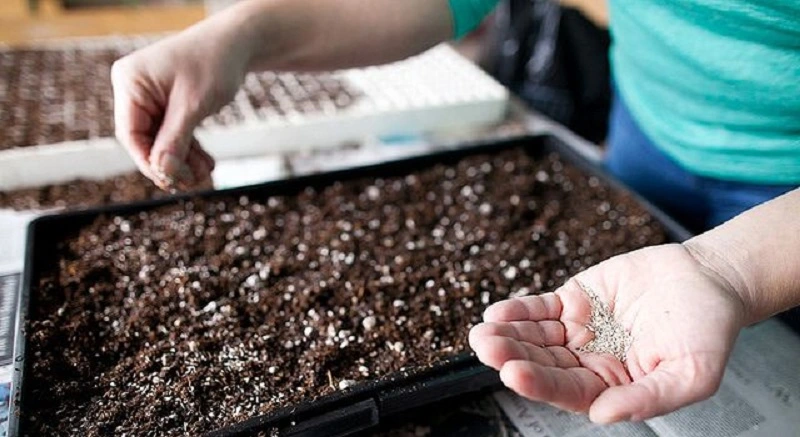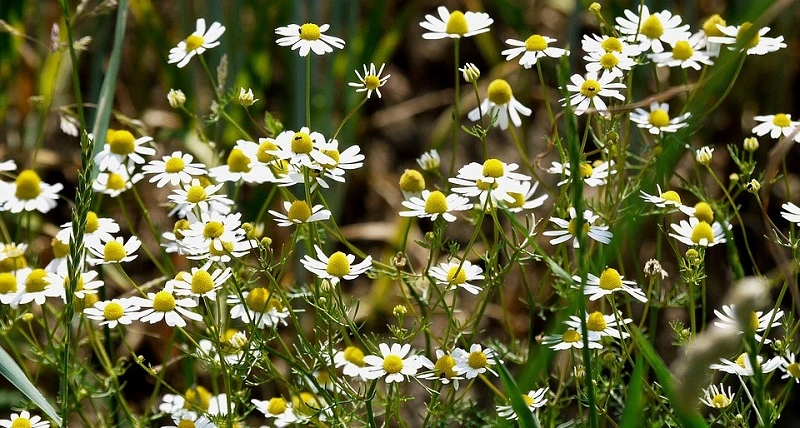Chamomile – a plant of the aster family, which does not require special care, but surprises with its beneficial properties. Chamomile or pharmacy – an annual medicinal plant of the aster family, found throughout Ukraine, Europe and North America. Despite the use of chamomile in both folk and official medicine, it is still classified as a weed that can be found on roadsides, in wastelands, in fields, gardens and so on. Although today there are breeding varieties of chamomile, which contain more essential oils, most fans of folk medicine prefer to prepare their own fragrant raw materials, because when and how the flowers were collected, often depends on the success of treatment.
Chamomile – a plant of the aster family, which does not require special care, but surprises with its beneficial properties. Chamomile or pharmacy – an annual medicinal plant of the aster family, found throughout Ukraine, Europe and North America. Despite the use of chamomile in both folk and official medicine, it is still classified as a weed that can be found on roadsides, in wastelands, in fields, gardens and so on. Although today there are breeding varieties of chamomile, which contain more essential oils, most fans of folk medicine prefer to prepare their own fragrant raw materials, because when and how the flowers were collected, often depends on the success of treatment.
How and when to plant chamomile
It is customary to sow chamomile in late summer – early autumn. In this case, the harvest promises to be maximum. But a month before sowing it is necessary to prepare the soil. For sowing chamomile it is better to choose a well-lit area, dig it up and fertilize. As a fertilizer per 1 square meter of bed suitable bucket of well-rotted manure or 15-20 g of nitrogen and 40-50 g of phosphorus fertilizers.
Before the actual sowing of chamomile every half a meter dig shallow furrows, water them and sow seeds in them at the rate of half a gram per 1 sq m, then sprinkle the furrows with a layer of mulch 0.5-1 cm
The area sown with chamomile should be abundantly watered and regularly weeded. After the first shoots appear, they need to be thinned.
It is optimal to leave 20-30 plants on one running meter of a bed. It is possible to grow a camomile both from seeds, and having moved to a bed a lump of the earth with wild plants. The seeds will crumble, and thick sprouts will germinate from them in the spring.
Every three years, the place for growing chamomile in the backyard must be changed.
From the moment of seed germination to the flowering of chamomile takes 50-70 days. At the same time one flower blooms from a week to 10 days, but due to the fact that all the shoots will bloom at different times, the duration of flowering chamomile beds will be 1-2 months. Up to 6 harvests can be harvested during this time!

Growing chamomile from seed
Growing chamomile is possible by seedling and non-seedling method. You can sow the seeds of chamomile just in the soil, but it is safer to use the seedling method. Chamomile seeds are sown for seedlings in March. Trays with cells are filled with moist, light, breathable substrate consisting of peat and sand in equal parts, decompose in each cell 2-3 seeds, sprinkle them on top with a thin layer of substrate, cover the container with a transparent film and placed near the window, but not on the windowsill, because light passes through the glass, which is too high intensity and can damage the germination of seeds. Monitor the condition of the soil, and as soon as it dries, moisten it with a spray.
Chamomile seedlings
When the sprouts begin to appear, and at normal room temperature it will happen in one and a half to two weeks, remove the film and place the container as close as possible to the sunny window, protecting the seedlings from drafts. If for some reason this is not possible, place a fluorescent lamp over the container, which should work at least 14 hours a day. As soon as the chamomile seedlings reach a height of 5 cm, leave in each cell only one, the most developed seedlings.
But do not pull out unnecessary sprouts, and carefully pluck them above the soil surface, because you risk damaging the root system, the remaining seedlings. To make the chamomile bush, graft it over 3-4 leaves.
Seedlings are planted in the soil at the age of 4-6 weeks, when all possible frosts will pass.
Chamomile care
Until chamomile seedlings are mastered in the soil and begin to grow, they should be watered frequently, but after rooting the flowers require watering only in dry weather.
To keep moisture in the soil longer, mulch the surface around the plant with peat. In other respects, the care of daisies is to loosen the soil, weed the area, fertilize and prepare perennials for winter. Humus, peat and compost are applied to the soil annually as fertilizers. In mid-spring, ammonium nitrate is spread in between rows at the rate of 20 g per m2 without further watering. During the period of budding under plants with faded stems and leaves, it is advisable to make a solution of urea. Slaked lime or dolomite flour is added to the soil with an acid reaction in autumn.
Collect chamomile for 3-5 days after the flowers open and the white petals begin to settle horizontally.
It is during this period that the plant contains the greatest amount of healing substances. Collect chamomile by hand, tearing off only the flower baskets. Flowers with the rest of a stalk no more than 3 cm long are allowed to be dried. The flower can be dried in several ways: in the open air, in the attic, in a dry room, in dryers at a temperature of 10 degrees. For better drying, the plant must be stirred regularly.

